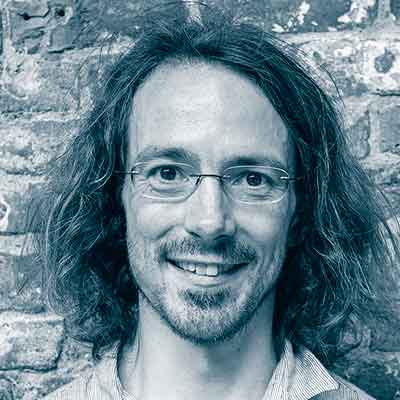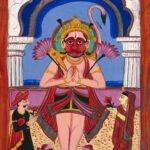Vedas and Upanishads

The Vedas and Upanishads are poignant and essential texts within Hindu culture and tradition. They provide an insight into the teachings of Hinduism and offer a comprehensive understanding of Hindu philosophy and ritual. This excellent course offers a digestible and engaging introduction to the religious and philosophical teachings of the Vedas and Upanishads, and our tutors provide students with an easy to understand guide.
Although collectively the Vedas and Upanishads are extensive and vast, at OCHS Online we provide students with a thorough understanding and appreciation through carefully selected passages. Students have the opportunity to participate in detailed study, discussions, and exploration into the Vedas and Upanishads and analyse texts, all with the consistent support and guidance of an experienced and specialist tutor.
If you would like to learn more about this course, keep reading. Alternatively, if you would like to view other courses, view our selections here.
Start Date: 18 January 2026
Course Duration: Seven Weeks
92 pages
On-Demand Video
The main video component of your course. On-demand means you can watch at the time that suits you.
3hr 51min
Community Discussions
These free Zoom sessions are not part of your main course materials. They are led by OCHS-affiliated scholars and open to students enrolled in any course.
Explore other areas of Hindu studies! Meet tutors and students from other courses!
Monday, 26 January, 12noon
Tuesday, 3 February, 2pm
Thursday, 12 February, 3pm
Saturday, 21 February, 5pm
Sunday, 1 March, 6pm
These are all UK times. Recordings are available for any sessions you miss
This course is an introduction to the religious teachings of the Vedas (Veda Samhitas) and the Upanishads.
We move from broad understandings to specific passages. This gives first-hand experience of the literature and practice in the process of interpretation.
The course consists of seven weekly sessions.
Session One: Introduction to the Vedas and the Vedic Religion
We begin with a look at the Vedas, particularly the hymns of the Rig Veda and the Gods they glorify. The Veda is known as shruti, or “that which was heard”. In the Vedas the sages reveal the sacred words they had heard or realised, not their own teachings. Therefore the Veda is also known as apaurusheya, or not the work of any person.
According to tradition, the Veda was originally one until Veda-vyasa divided it into four: the Rig, Sama, Yajur, and Atharva Vedas. Of these, the Atharva held a lesser status and so we sometimes find references to three Vedas only.
“At first was neither being nor non-being
There was not air nor yet sky beyond.
What was its wrapping? Where? In whose protection?
Was Water there, unfathomable and deep?“Rig Veda 10.129.1
Session Two: Vedic Hymns and Vedic Ritual
We now move to the rituals taught by the Veda, with a focus on offerings to the sacred fire. We then discuss the relevance of the Vedas and their ritual in contemporary Hinduism.
Session Three: Introduction to the Upanishads
We look at the Upanishads, the philosophical portion of the shruti. Academic works often discuss the Upanishads as if they were separate from the Veda. The Hindu tradition, however, holds a different view and considers the Upanishads as Vedic.
Here we survey Upanishadic thought, concluding with a study of the Isha Upanishad – one of the shortest of the major Upanishads.
Session Four: The Brihad Aranyaka Upanishad
A glance through any collection of the Upanishads will reveal the Brihad Aranyaka and Chandogya Upanishads as distinct from the others. They are much longer than the other Upanishads. They are prose rather than verse. And they are closer to the Vedas than many of the other Upanishads.
The speakers here are Vedic priests looking for a spiritual significance to their ritual. In this way they seek ultimate reality. The notion of a Supreme God is absent. The ultimate principle is designated either as the atman or as brahman, though the two are explained as being identical. Here, Brahman is to be realised, not prayed to or worshipped.
Session Five: The Chandogya Upanishad
In this session we consider the Chandogya Upanishad, read through selected passages, and attempt to interpret their meaning.
The Chandogya is an Upanishad of the Sama Veda. It is similar to the Brihad Aranyaka, so scholars refer to them as the “Vedic Upanishads”. These two are regarded as the earliest Upanishads with a suggested date of between 700 and 500 BC.
The Vedic Upanishads pay attention to the religion of the Vedas and to the meaning of the Vedic sacrifice. However, they are less concerned with the detail of the ritual as with the higher meaning that lies behind the ceremony.
“Now, here in this fort of brahman there is a small lotus, a dwelling-place, and within it, a small space. In that space there is something—and that’s what you should try to discover, that’s what you should seek to perceive.“
Chandogya Upanishad 8.1.1
Session Six: The Katha Upanishad

The Katha Upanishad is quite different from the Brihad Aranyaka and the Chandogya. It concerns itself less with ritual and stands as a work of religious philosophy. At 120 verses it is also much shorter than the Vedic Upanishads. However, this is not to suggest that it is an easier work to understand!
The Katha Upanishad emphasises the transcendence of the atman. It speaks of the need for spiritual aspirants to practice detachment and seek the spiritual self through knowledge and yoga.
Its meaning depends on one’s perspective and religious background. Followers of devotional traditions will point to passages that suggest a theistic interpretation. However, those who tend towards Advaita will note that it speaks of atman as the highest principle. Both interpretations are acceptable and there are verses and passages that can support either direction. Hence, as always, interpretation of sacred texts depends on the school and teacher one follows.
Session Seven: The Shvetashvatara Upanishad
The Shvetashvatara Upanishad is similar in form and length to the Katha Upanishad. While the ideas it expresses are distinct from the Vedas, it often quotes directly from Vedic works in order to show a connection. Unlike the Katha, there is no narrative in the Shvetashvatara Upanishad. It launches into its discourse from the outset by posing the questions it seeks to answer. It is only at the end that we learn that the teachings are from a person named Shvetashvatara who had gained realisation of brahman and imparted this wisdom to a group of renunciants.
The Shvetashvatara Upanishad marks a transition from emphasis on knowledge of the self towards more theistic and devotional tendencies that we find in the Bhagavad Gita and the Puranas. This Upanishad clearly names the Supreme Deity as Rudra and Shiva, and its teachings indicate a distinction between the individual, matter, and the Deity.
The Shvetashvatara Upanishad is also significant because it is here we find the fullest account of yoga practice of any major Upanishad.

Everyone who finishes the course will receive a certificate for 12 hours of study.Teachers registered with Yoga Alliance can log these as continuing education with a YACEP.
Associated Courses
Your Tutor

Daniel Simpson
Daniel has a Master’s degree in Traditions of Yoga and Meditation from SOAS, University of London. He’s also a devoted practitioner of asana, pranayama and meditation, which he’s studied on numerous visits to India since the 1990s. Daniel previously worked as a foreign correspondent, which helps him make complex subjects feel accessible. He writes about yoga for magazines and on his website: www.danielsimpson.info




